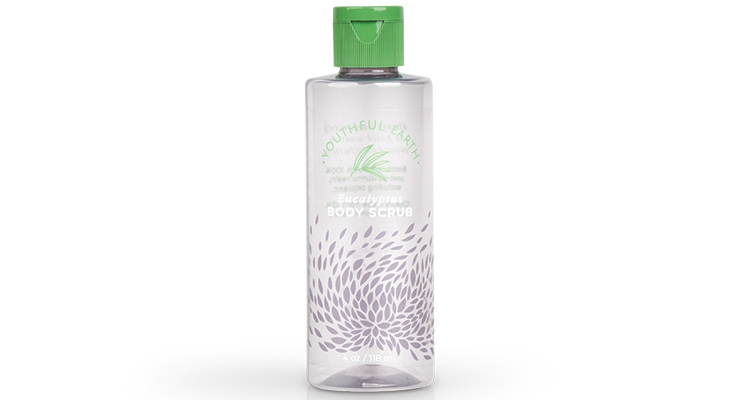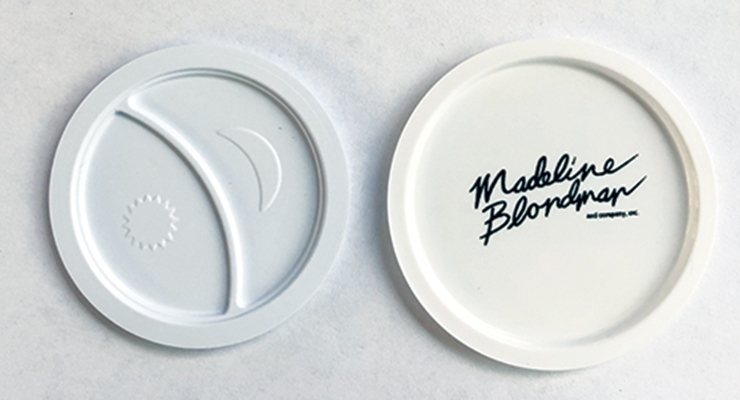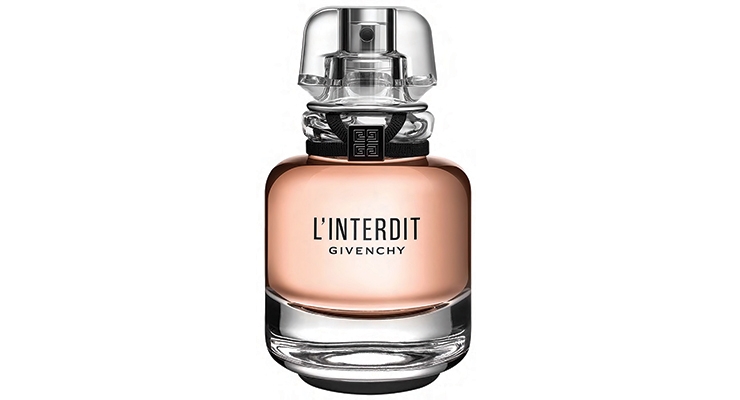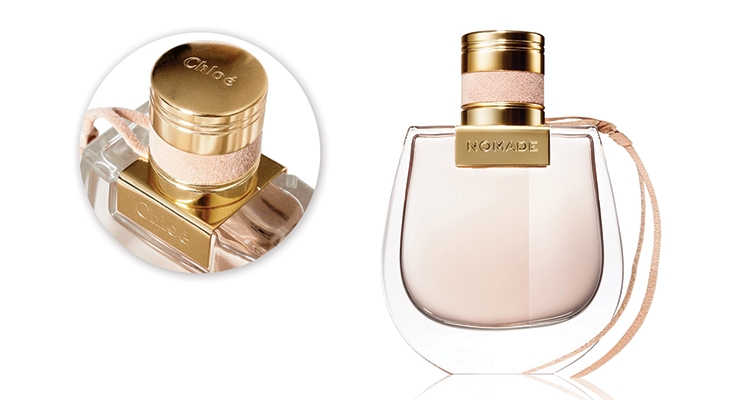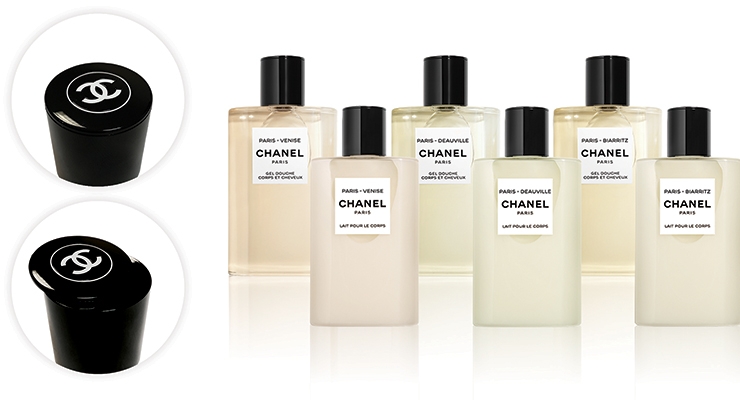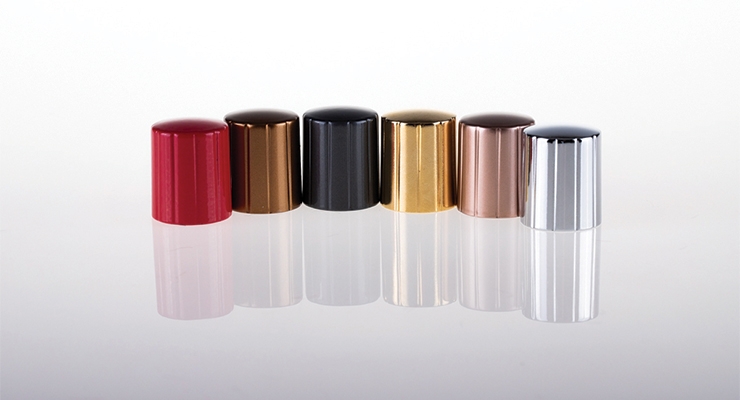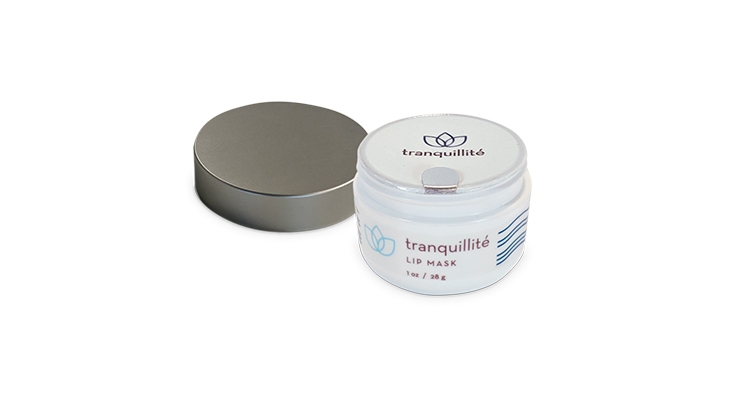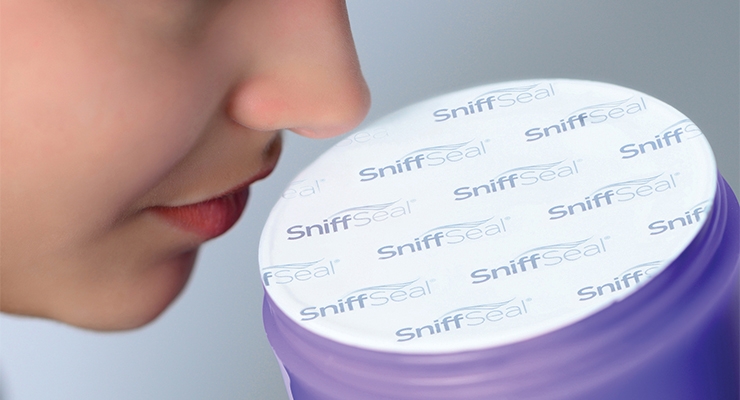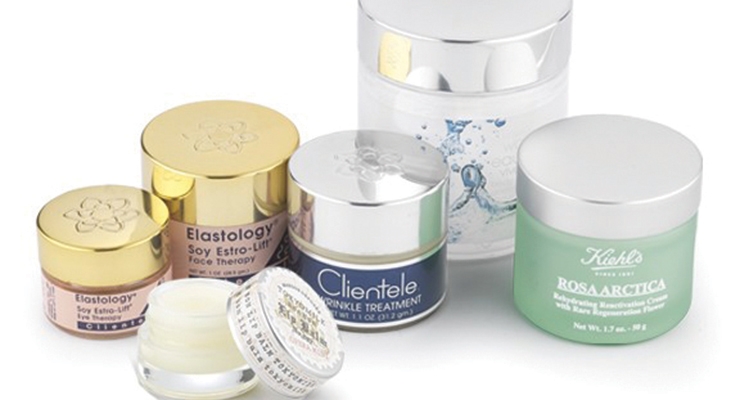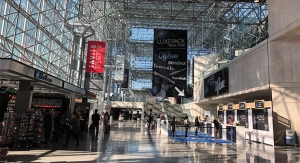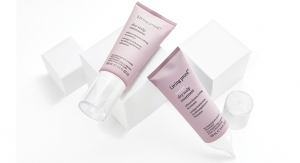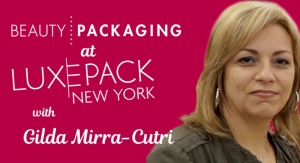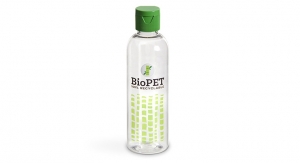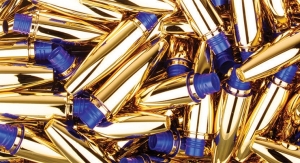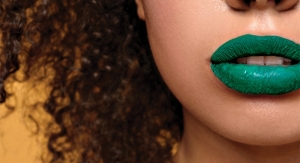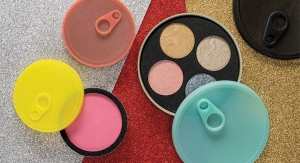Joanna Cosgrove, Contributing Editor07.26.19
Caps and closures play a pivotal role as customizable extensions of a package’s design identity and are often used by cosmetic manufacturers as implements to enhance product value and customer experience. Three of the most influential trends impacting the beauty, personal care and fragrance closure market right now are speed-to-market, customization and environmental consideration, and closure providers are continuing to fine tune their outputs to maximize the benefit associated with each.
Environmental Commitments
“There isn’t a packaged product out there today that isn’t being impacted by environmental considerations,” comments Juan Bruna, business development director, Tri-Seal, a Tekni-Plex business.
But he acknowledges that “eco-friendly” can be a tricky concept to navigate and continues to benefit from modern-day problem solving. “Let’s look at just one example: closures that feature a decorated metal overshell on a threaded plastic base,” he says.
“Although it might look aesthetically pleasing, the dual material makes it next to impossible to recycle. Municipal waste facilities are not able to separate the metal from the plastic in order to reclaim the base materials, so therefore, those closures are likely to end up in a landfill.
“Further, containers topped with those closures have to be shipped in trays to minimize the chance that the closures will dent,” he continues. “This adds more packaging material, which in turn adds cost and further complicates the environmental impact. It’s these types of considerations that beauty care companies are being forced to evaluate going forward.”
Another arm of the movement is the shift away from petroleum-based resins. “Brands of all sizes are looking for sustainable packaging solutions including PCR and/or bio-based resin that minimize the dependence on virgin petroleum-based resins,” says Rebecca Vara, vice president of personal care sales at Berry Plastics.
Berry Plastics’ Verdant product line, launched last year, includes closures and over caps, as well as bottles, tubes, and jars with PCR content ranging from 10% to 100% that have passed packaging protocols and regulatory requirements. “The launch of Verdant is really the tip of the spear and the first of what we plan to offer the market in terms of post-consumer resins and materials,” explains Vara. “
We view sustainability as a business imperative, and we plan to bring more eco-conscious products to the market in the future.”
Jacques Cohen, president, Axilone USA, says Axilone Group has been actively developing sustainable solutions in an effort to honor varied requests from brands. “Brands don’t all have the same perception of what ‘green’ is and there is no consensus on best practices,” he says. “Some brands want to switch from plastic to aluminum and others want the opposite.”
Alongside ecologically fine-tuned production methods that include hybrid and electric injection equipment, solvent-free metallizing and lacquering, and nickel-free anodization, Axilone is using non-oil based, green materials that consist of post-consumer recycled (PCR) plastic materials, PCR aluminum from beverage cans, partially bio-sourced materials and cellulosic materials—and has incorporated biomass such as wood and seashells in PCR materials.
At Lombardi Design and Manufacturing, Jack Albanese, director of new business development, reports that the use of post-consumer resin and regionalized manufacturing is another trend. “That’s an advantage for us as we have a reliable stream of PCR and produce near the East Coast contract manufacturers,” he says. “Lombardi continues to expand its use of advanced engineered resins that provide us with glasslike clarity, chemical resistance and minimal appearance of injection gates.”
Jar seal manufacturer, Madeline Blondman, has undertaken the challenge of testing and investigating alternative recyclable or eco-friendly materials that deliver good product compatibility and barrier properties. “We work with each brand to customize their discs or dustcovers; our products are unique in that they sit inside the jar in direct contact with the creams inside,” says the company’s president Randi Barron. “Therefore, we need to ensure that our materials are stable and can be compatible with the ingredients contained in the products.”
Luxurious Effects
In addition to serving the important functional purposes of keeping formulas contained inside of their packaging and protecting dispenser componentry, lids, caps and closures also offer additional real estate for brand messaging and decoration.
Axilone Group worked with Givenchy to create a signature DuPont Surlyn cap to crown the newly modernized package of its iconic 1957 fragrance, L’Interdit from Givenchy.
The new bottle takes the form of a translucent glass vial with a large thick base and is topped off with a smooth, transparent cap for a simple, refined and totally contemporary look that the company says captures the “essence of femininity.”
A specialist in plastic injection molding and metal stamping, Axilone said Surlyn was “ideal for this project due to its crystalline transparency, brilliance, the absence of inclusions and its ability to allow high material thicknesses in mono-injection.” And while the Surlyn cap gives the impression of glass in both visible and tactile ways, the material additionally offers chemical scent and scratch resistance.
Axilone also created two unique fragrance closure solutions that transcend simple snap-on functionality. For Chloé’s feminine Nomade scent, Axilone delivered an elegantly feminine closure comprised of an aluminum base ring oriented on an insert. The unit is anodized in gold and stamped with the Chloé logo. The closure is accented with a pink suede “headband.”
The company also executed a closure imagined by Chanel’s artistic director for Les Eaux, a fragrance launched last year.
Characterized by a technically challenging “Twist-Slide” capsule, the innovative cap combines leakproof properties with a classic Chanel aesthetic thanks to a three-piece, bi-injected insert. A simple unscrewing gesture slides the upper part of the closure to reveal the fragrance dispenser concealed inside.
Metapack was challenged to develop a stylish, plastic-free lipstick case for La Bouche Rouge and the result is understatedly extravagant. Rooted in the premise that “the future of beauty should be virtuous and circular,” the lipstick formula is vegan. Its bullet package is PP and PO-free, “infinitely refillable” and encased in bespoke, cruelty-free, leather.
“To make a nice closing without plastic, we designed the case with magnetic locking,” explains Metapack’s Francoise Damide.
“We find the right magnet force to have an easy opening as well as a strong locking avoiding the lipstick tube popping out from its case and getting damaged in the handbag.”
Coverpla’s Gilda Cutri, vice president of operations and business development, has observed an increased brand interest in higher-end caps and closures, with decoration requests for silk screening, embossing and the debossing of logos/designs.
One of Coverpla’s latest launches is a new zamac fragrance cap line designed to fit over their pumps and collars. Cutri says this is more cost-effective for customers in search of a luxurious look and in heavier weight or oversized options.
The line, which spans six designs, launched in mid-June. “They are existing caps that we will now have in our inventory of standards,” Cutri explains. “Zamac is very heavy and has a beautiful metallic finish [and can be custom engraved].”
Luxurious decoration on caps and closures is an important and growing trend. “Brands are looking for decoration options that look premium, high-end, and are visually stimulating, creating a package that pops off the shelf,” says Berry Plastics’ Vara, who points to options such as custom colorants and finishes which mimic the look of wood grain or marble, custom embossing and metallization. “[Berry is] investing in new equipment to provide a metallized appearance on closures through the use of unique foils.”
Enhanced Protections
Foil liners, affixed under caps and lids, provide a bonus look of luxe while also delivering an added layer of leak and formula protection in addition to the closure. Tekni-Plex’s Tri-Seal company is a specialist in protective liners, and markets a proprietary range of luxe closure liners for containers made of polyethylene (PE), polypropylene (PP) or polyethylene terephthalate (PET).
The liners are embossed and feature a folded pull tab for easy consumer removal. And because Luxe liners are applied via an induction seal, which secures the liner onto the PE, PP or PET container rim, the product also delivers tamper- and pilfer-evident attributes.
“Luxe seal aluminum-foil/foam liners were developed to provide a feature-rich alternative to traditional disc seals. In addition to improved function and safety, they also are an ideal packaging component for those seeking differentiation for their brand. The Luxe seal liner solution even makes it possible for marketers to eliminate folding cartons for some applications,” explains David Andrulonis, Tri-Seal’s senior vice president and general manager. “Luxe seals also can be embossed with no color, or with silver or gold cold-foil stamping to support brand objectives [and] can vividly stand out through a translucent closure…telegraph[ing] an upscale visual cue to consumers and provid[ing] another reminder that they have purchased a product of distinction.”
Berry Plastics has partnered with Tekni-Plex and recently, in conjunction with Tekni-Plex, added capabilities to produce Luxe seal embossed induction seal liners for jars at its Hot Springs, AR facility.
Separately, Amfora Packaging has also committed to the trend of premiumization, having just invested in new lines of metallization in its Peru and Colombia facilities to better attend to its customers and the market. “Decoration is vital for the luxury market and we have to offer new innovations like our translucent metallization,” says Luis Quispe Novoa, the company’s business development manager.
Recent Developments
Packaging suppliers are constantly working to develop new products in anticipation of new beauty packaging trends. Tekni-Plex is currently exploring alternative liner structures that support its environmental initiatives and offer a singular point of interaction with consumers. For instance, the company’s patented Sniff Seal technology is billed as the first liner to enable scent permeation through an induction seal closure liner without affecting the seal or compromising the contents. It’s an ideal way for consumers to experience a scent in the retail aisle without compromising the seal or the product contents.
“There are many instances where consumers want to know what a product actually smells like before putting it in the shopping cart. Unfortunately, there are times when consumers peel back seals or remove fitments to experience the scent before buying.
When a package is returned to the shelf in a compromised condition, it is no longer saleable. As a result, the retail industry experiences a significant amount of loss annually,” explains the company’s Andrulonis.
Cameo Metal Products is currently working on a new line of custom jar covers with built-in custom options, giving brands the opportunity to mix and match different designs without paying for tooling. The covers deliver familiar closure specs but the outside of the cap is amenable to decorating techniques like embossing, debasing and silk screen options.
And finally, on the innovation front, AJG Packaging debuted an innovative line of Eco Low Profile injection-molded closures developed by Italian-based manufacturer Giflor Closure Technologies at Luxe Pack New York. The company says the very low-profile dispensing caps are noteworthy because of their range of shaping options, aesthetic superiority and eco-friendliness. The beauty segment closures are constructed of polypropylene copolymer, are available in more than 350 colors, and feature a patented design that audibly clicks closed. Classic and innovative shapes, as well as custom configurations, are designed to be paired with a variety of rigid plastic container configurations, and AJG maintains that they offer excellent resistance to humidity and cold.
Environmental Commitments
“There isn’t a packaged product out there today that isn’t being impacted by environmental considerations,” comments Juan Bruna, business development director, Tri-Seal, a Tekni-Plex business.
But he acknowledges that “eco-friendly” can be a tricky concept to navigate and continues to benefit from modern-day problem solving. “Let’s look at just one example: closures that feature a decorated metal overshell on a threaded plastic base,” he says.
“Although it might look aesthetically pleasing, the dual material makes it next to impossible to recycle. Municipal waste facilities are not able to separate the metal from the plastic in order to reclaim the base materials, so therefore, those closures are likely to end up in a landfill.
“Further, containers topped with those closures have to be shipped in trays to minimize the chance that the closures will dent,” he continues. “This adds more packaging material, which in turn adds cost and further complicates the environmental impact. It’s these types of considerations that beauty care companies are being forced to evaluate going forward.”
Another arm of the movement is the shift away from petroleum-based resins. “Brands of all sizes are looking for sustainable packaging solutions including PCR and/or bio-based resin that minimize the dependence on virgin petroleum-based resins,” says Rebecca Vara, vice president of personal care sales at Berry Plastics.
Berry Plastics’ Verdant product line, launched last year, includes closures and over caps, as well as bottles, tubes, and jars with PCR content ranging from 10% to 100% that have passed packaging protocols and regulatory requirements. “The launch of Verdant is really the tip of the spear and the first of what we plan to offer the market in terms of post-consumer resins and materials,” explains Vara. “
We view sustainability as a business imperative, and we plan to bring more eco-conscious products to the market in the future.”
Jacques Cohen, president, Axilone USA, says Axilone Group has been actively developing sustainable solutions in an effort to honor varied requests from brands. “Brands don’t all have the same perception of what ‘green’ is and there is no consensus on best practices,” he says. “Some brands want to switch from plastic to aluminum and others want the opposite.”
Alongside ecologically fine-tuned production methods that include hybrid and electric injection equipment, solvent-free metallizing and lacquering, and nickel-free anodization, Axilone is using non-oil based, green materials that consist of post-consumer recycled (PCR) plastic materials, PCR aluminum from beverage cans, partially bio-sourced materials and cellulosic materials—and has incorporated biomass such as wood and seashells in PCR materials.
At Lombardi Design and Manufacturing, Jack Albanese, director of new business development, reports that the use of post-consumer resin and regionalized manufacturing is another trend. “That’s an advantage for us as we have a reliable stream of PCR and produce near the East Coast contract manufacturers,” he says. “Lombardi continues to expand its use of advanced engineered resins that provide us with glasslike clarity, chemical resistance and minimal appearance of injection gates.”
Jar seal manufacturer, Madeline Blondman, has undertaken the challenge of testing and investigating alternative recyclable or eco-friendly materials that deliver good product compatibility and barrier properties. “We work with each brand to customize their discs or dustcovers; our products are unique in that they sit inside the jar in direct contact with the creams inside,” says the company’s president Randi Barron. “Therefore, we need to ensure that our materials are stable and can be compatible with the ingredients contained in the products.”
Luxurious Effects
In addition to serving the important functional purposes of keeping formulas contained inside of their packaging and protecting dispenser componentry, lids, caps and closures also offer additional real estate for brand messaging and decoration.
Axilone Group worked with Givenchy to create a signature DuPont Surlyn cap to crown the newly modernized package of its iconic 1957 fragrance, L’Interdit from Givenchy.
The new bottle takes the form of a translucent glass vial with a large thick base and is topped off with a smooth, transparent cap for a simple, refined and totally contemporary look that the company says captures the “essence of femininity.”
A specialist in plastic injection molding and metal stamping, Axilone said Surlyn was “ideal for this project due to its crystalline transparency, brilliance, the absence of inclusions and its ability to allow high material thicknesses in mono-injection.” And while the Surlyn cap gives the impression of glass in both visible and tactile ways, the material additionally offers chemical scent and scratch resistance.
Axilone also created two unique fragrance closure solutions that transcend simple snap-on functionality. For Chloé’s feminine Nomade scent, Axilone delivered an elegantly feminine closure comprised of an aluminum base ring oriented on an insert. The unit is anodized in gold and stamped with the Chloé logo. The closure is accented with a pink suede “headband.”
The company also executed a closure imagined by Chanel’s artistic director for Les Eaux, a fragrance launched last year.
Characterized by a technically challenging “Twist-Slide” capsule, the innovative cap combines leakproof properties with a classic Chanel aesthetic thanks to a three-piece, bi-injected insert. A simple unscrewing gesture slides the upper part of the closure to reveal the fragrance dispenser concealed inside.
Metapack was challenged to develop a stylish, plastic-free lipstick case for La Bouche Rouge and the result is understatedly extravagant. Rooted in the premise that “the future of beauty should be virtuous and circular,” the lipstick formula is vegan. Its bullet package is PP and PO-free, “infinitely refillable” and encased in bespoke, cruelty-free, leather.
“To make a nice closing without plastic, we designed the case with magnetic locking,” explains Metapack’s Francoise Damide.
“We find the right magnet force to have an easy opening as well as a strong locking avoiding the lipstick tube popping out from its case and getting damaged in the handbag.”
Coverpla’s Gilda Cutri, vice president of operations and business development, has observed an increased brand interest in higher-end caps and closures, with decoration requests for silk screening, embossing and the debossing of logos/designs.
One of Coverpla’s latest launches is a new zamac fragrance cap line designed to fit over their pumps and collars. Cutri says this is more cost-effective for customers in search of a luxurious look and in heavier weight or oversized options.
The line, which spans six designs, launched in mid-June. “They are existing caps that we will now have in our inventory of standards,” Cutri explains. “Zamac is very heavy and has a beautiful metallic finish [and can be custom engraved].”
Luxurious decoration on caps and closures is an important and growing trend. “Brands are looking for decoration options that look premium, high-end, and are visually stimulating, creating a package that pops off the shelf,” says Berry Plastics’ Vara, who points to options such as custom colorants and finishes which mimic the look of wood grain or marble, custom embossing and metallization. “[Berry is] investing in new equipment to provide a metallized appearance on closures through the use of unique foils.”
Enhanced Protections
Foil liners, affixed under caps and lids, provide a bonus look of luxe while also delivering an added layer of leak and formula protection in addition to the closure. Tekni-Plex’s Tri-Seal company is a specialist in protective liners, and markets a proprietary range of luxe closure liners for containers made of polyethylene (PE), polypropylene (PP) or polyethylene terephthalate (PET).
The liners are embossed and feature a folded pull tab for easy consumer removal. And because Luxe liners are applied via an induction seal, which secures the liner onto the PE, PP or PET container rim, the product also delivers tamper- and pilfer-evident attributes.
“Luxe seal aluminum-foil/foam liners were developed to provide a feature-rich alternative to traditional disc seals. In addition to improved function and safety, they also are an ideal packaging component for those seeking differentiation for their brand. The Luxe seal liner solution even makes it possible for marketers to eliminate folding cartons for some applications,” explains David Andrulonis, Tri-Seal’s senior vice president and general manager. “Luxe seals also can be embossed with no color, or with silver or gold cold-foil stamping to support brand objectives [and] can vividly stand out through a translucent closure…telegraph[ing] an upscale visual cue to consumers and provid[ing] another reminder that they have purchased a product of distinction.”
Berry Plastics has partnered with Tekni-Plex and recently, in conjunction with Tekni-Plex, added capabilities to produce Luxe seal embossed induction seal liners for jars at its Hot Springs, AR facility.
Separately, Amfora Packaging has also committed to the trend of premiumization, having just invested in new lines of metallization in its Peru and Colombia facilities to better attend to its customers and the market. “Decoration is vital for the luxury market and we have to offer new innovations like our translucent metallization,” says Luis Quispe Novoa, the company’s business development manager.
Recent Developments
Packaging suppliers are constantly working to develop new products in anticipation of new beauty packaging trends. Tekni-Plex is currently exploring alternative liner structures that support its environmental initiatives and offer a singular point of interaction with consumers. For instance, the company’s patented Sniff Seal technology is billed as the first liner to enable scent permeation through an induction seal closure liner without affecting the seal or compromising the contents. It’s an ideal way for consumers to experience a scent in the retail aisle without compromising the seal or the product contents.
“There are many instances where consumers want to know what a product actually smells like before putting it in the shopping cart. Unfortunately, there are times when consumers peel back seals or remove fitments to experience the scent before buying.
When a package is returned to the shelf in a compromised condition, it is no longer saleable. As a result, the retail industry experiences a significant amount of loss annually,” explains the company’s Andrulonis.
Cameo Metal Products is currently working on a new line of custom jar covers with built-in custom options, giving brands the opportunity to mix and match different designs without paying for tooling. The covers deliver familiar closure specs but the outside of the cap is amenable to decorating techniques like embossing, debasing and silk screen options.
And finally, on the innovation front, AJG Packaging debuted an innovative line of Eco Low Profile injection-molded closures developed by Italian-based manufacturer Giflor Closure Technologies at Luxe Pack New York. The company says the very low-profile dispensing caps are noteworthy because of their range of shaping options, aesthetic superiority and eco-friendliness. The beauty segment closures are constructed of polypropylene copolymer, are available in more than 350 colors, and feature a patented design that audibly clicks closed. Classic and innovative shapes, as well as custom configurations, are designed to be paired with a variety of rigid plastic container configurations, and AJG maintains that they offer excellent resistance to humidity and cold.


